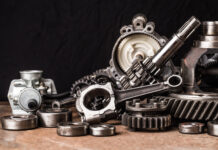With the warm weather in full swing across many united states, many Canadians are thinking about a new-to-them sports vehicle to revel in throughout the approaching heat-weather journey season. For this week’s used car tip manual, we’ll highlight useful checks, guidelines, and recommendations to recall earlier than buying any used sports automobile every single time.
Whether you’re after a Mitsubishi Evolution, Hyundai Veloster, Chevrolet Corvette, Ford Focus ST, Porsche Boxster, or anything else, undergo the subsequent in mind for quality effects.
Direct injection engine care. Many contemporary cars, including sports automobiles, run a direct injection engine, which sees gasoline sprayed under intense stress directly into the combustion chamber. Though different abbreviations are feasible, direct injection engines are commonly labeled GDI, TFSI, DI, or even T-GDI.

Many proprietors have said problems with accumulations of valve gunk in this kind of engine. This seems to be a function of this engine, irrespective of the emblem or model. To protect yourself from likely-harmful valve-gunk troubles, plan on the subsequent: Determine if the engine in the used car you’re thinking about has direct injection or no longer. A Google search or a look at the vehicle’s online specification page may be beneficial here.
Has the vehicle been subjected to an automated diagnostic experiment before you purchase it? If the experiment reveals a code referencing an engine misfire, further investigation for valve gunk is recommended. Note that this step must be completed whether or not a check engine mild (CEL) is apparent.
Confirm that the automobile has had all oil, filter, and spark plug adjustments finished on time on every occasion. Confirm that the car has best been fuelled with notable gas from a good retailer. Finally, plan to stick to those steps at some stage in ownership. Use the handiest manufacturing unit-advocated engine oil, filters, and (mainly) spark plugs. Follow the ‘severe’ provider schedule for spark plug adjustments, and trade the pins no longer a second later—the in advance, the higher.
Tires and brakes
Tires and brakes are like pencil erasers; they wear down a little bit every time they’re used until they want to be replaced. Sports vehicles tend to go through tires and brakes more quickly than most automobiles, so approach any used sports car, assuming it’ll need $1,500 worth of tires and brake elements until you (or a certified professional) determine this isn’t the case. Before you buy, have the quality time to decide if the promoting individual or dealership would, as an alternative, foot the invoice to replace worn tires and brakes.
Beware of modifications
I push this point lot, and I’ll do it once more here: the average shopper is fine cautioned to avoid shopping for a used sports vehicle that’s been modified by its past proprietor, specifically with non-manufacturing unit elements and (even extra so), with non-factory engine programming, which can also take the form of a chip or energy tune. The reason? Modifications like those can negatively affect the reliability and sturdiness of the car. They could likely, void any closing warranty insurance, although the offending parts or software program is eliminated before a guaranteed appointment.
Service marketing consultant Lori Boerio provides a vital reminder. “We’ve seen numerous owners buy new sports vehicles, upload a laptop application that turns the electricity up from the engine, after which suffer engine damage in a while. The damage to the engine is generally pretty detrimental,” says Boerio.
“Some offenders believe that getting rid of the software program protects them and that we’d replace their engine under assurance. This isn’t the case, and we have potent methods to inform if the engine pc has ever been tampered with or reprogrammed. Based on this, I’ve denied warranty claims to several clients — they’re normally furious, but no assurance covers engine damage because of using non-factory parts or programming.”


























